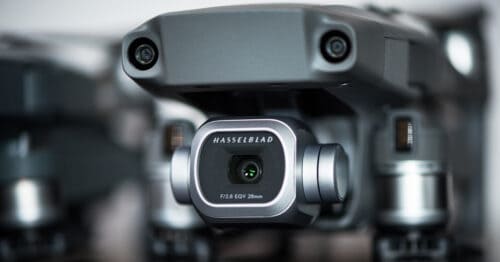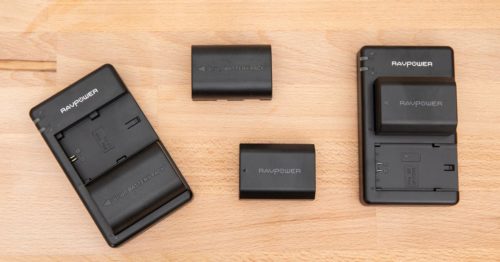The best way to get footage of your Mavic Air 2 is to use a MicroSD card in the drone, and then simply remove the card and plug it into a card reader. While this is ideal, I recently ran into a problem.
I had filled my Mavic’s MicroSD card and immediately the drone switched to recording additional footage and photos onto the 8GB of built-in memory. That’s great, but how do you get that footage off the drone when you get home?
This proved to be harder that I thought it would be. And frankly, DJI, it is something that needs to be fixed! All of DJI’s drones have a USB-C port on them, so you would think that the solution is simply to plug the drone into your computer with a USB-C cable, right? Unfortunately it’s not necessarily that simple.
When I plugged my Mavic Air 2 into my Mac, it did not show up as an external drive. I tried a USB-C to USB-C cable, and a USB-C to USB-A cable, both plugged into a Thunderbolt hub that was connected to my Mac. Nothing happened.
I then started to wonder whether the drone was supposed to be switched on or off when I was doing this. There are certainly some devices out there that need to be off, in order to switch into “mass storage mode” and be recognized as a drive. So I tried this, and that didn’t work either.
After some searching around on the DJI forums, it turns out I’m not the only one struggling with this. Many people reported the same problem.
The Solution
From other reports, it seemed to be an issue with the type of USB-C cables that are used. Confusingly, there are many different USB-C cables out there, but on the outside, they all look the same. Some USB-C cables are USB 3.1 Gen 1 compliant, some are USB 3.1 Gen 2 compliant. Some are for power only, some for data and some are for both. Some are even older USB 2 cables simply dressed up with a newer USB-C plug on the end of them.
Option 1
If you happen to have the charging cable for the DJI Smart Controller, I can confirm that this USB-C to USB-A cable does work. Once I connected my Mavic Air 2 to my Mac with that cable, via an Anker USB-C to USB-A adapter dongle, it showed up right away as an external drive. However, this cable is about 5 inches long so it’s not very convenient unless you are using it with a laptop on a table and can put the drone right next to it.
I believe that this cable also comes with the standard version of the Mavic Air 2. If you still have it, this should work fine.
Option 2
As I said, none of these cables is ever labelled. If you have a box of USB cables as I do, there really isn’t any other way to do it but trial and error! I tried some USB-C to USB-C cables that support USB 3.1 Gen 2, and found that these cables definitely do not work. I then tried some other USB-C to USB-A cables and found them not to work, either. I suspected they are USB 3.1 Gen 1.
This leads me to believe that the USB-C port on the Mavic Air 2, and likely other DJI drones, is actually USB 2. The majority of USB-C cables out there are USB 3, which is why most of the cables I had lying around the office did not work.
Summary
This is a real pain in the ass. But what I can confirm, if you are having the same problem, is that it is not a problem with your computer or your drone. The problem lies with the USB cable. If you can find the original USB-C to USB-A cable that came with your drone, and then use an adapter dongle on that to get it into the USB-C port of your Mac, you will be fine.










Tried every USB-C to USB-C I had in the house until I finally found a USB-C to USB-A and of course it works immediately